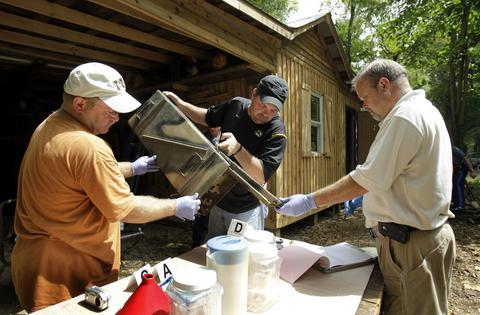How meth became an epidemic in America, and what’s happening now that it’s faded from the headlines
Published in Health & Fitness
Rural America has long suffered from an epidemic of methamphetamine use, which accounts for thousands of drug overdoses and deaths every year.
William Garriott, an anthropologist at Drake University, explored meth’s impact on communities and everyday life in the U.S. in his 2011 book “Policing Methamphetamine: Narcopolitics in Rural America.” Since then, the problem has only gotten worse.
The rural news site the Daily Yonder spoke with Garriott about what has been driving the surge in meth use in recent decades and what prompted him to focus on meth in his work. The Conversation has collaborated with The Daily Yonder to share the interview with you.
How’d you get interested in methamphetamine as an academic subject?
When I started my Ph.D in anthropology in 2003, I knew I wanted to focus on the Appalachian region of the United States. At the time, I was curious about religious life in the region and its contribution to the growth of Pentecostalism and evangelicalism around the world.
But I had also just taken a course with medical anthropologist Arthur Kleinman. He says that we should seek to understand “what’s at stake” or “what really matters” for people in their everyday lives.
And what really mattered to people in places like eastern Kentucky at the time was drugs. We now know we were at the beginning of the opioid epidemic. OxyContin was already taking a toll on local communities, and there was little national concern because it was seen as an isolated regional problem (the derogatory term “hillbilly heroin” was getting thrown around a lot at the time).
When I started my dissertation research, methamphetamine had become the primary concern, both regionally and nationally. When the Patriot Act was reauthorized in 2005, the only significant addition was anti-meth legislation called the Combat Meth Epidemic Act.
In what sense was the meth surge of the ’90s and early 2000s a rural phenomenon?
Lots of ways. The internet gave people access to meth recipes, and meth cooks tended to be located in rural areas. It was easier to hide and access key ingredients like anhydrous ammonia. In fact, the number of meth labs grew so quickly that huge swaths of the rural U.S. were labeled High Intensity Drug Trafficking Areas – something that had only been applied to cities like New York and Los Angeles before.
...continued








Comments